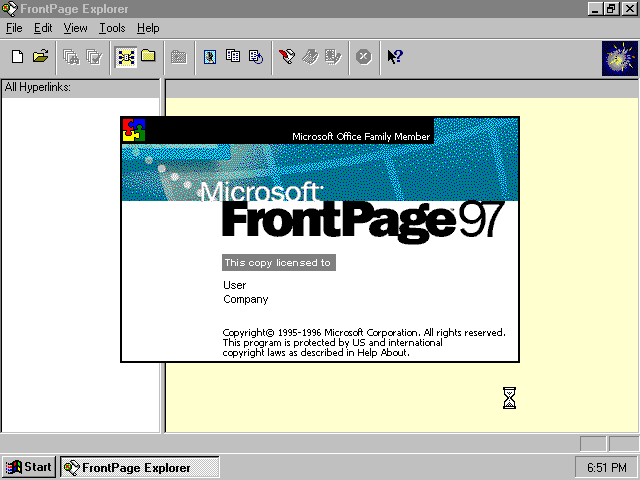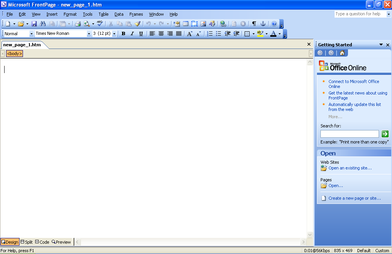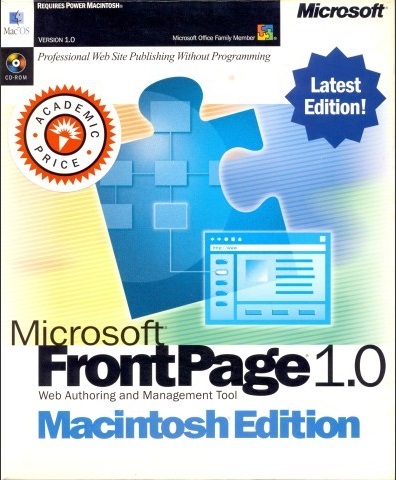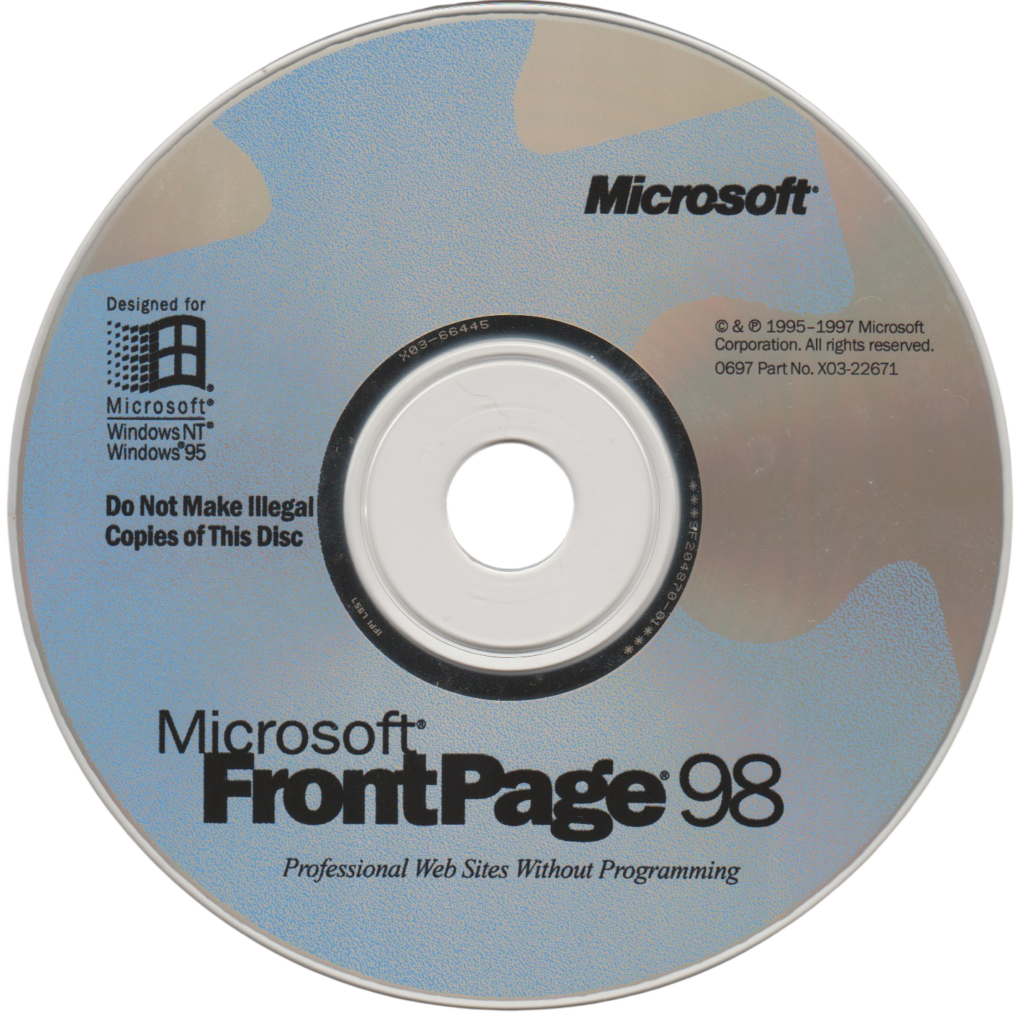There was a time when building a websites felt like deciphering ancient scripts, Microsoft FrontPage was supposed to change all that. For a time, it did. FrontPage promised to bring website creation to the masses, making it easy for anyone to design and publish their own pages without needing to know a single line of code. But, like many ambitious software projects, it eventually fell into the shadows of more advanced tools. Let’s explore the rise and fall of Microsoft FrontPage, a pioneer that once made the web more accessible to everyone.
The Birth of a Web Revolution
In 1996, Microsoft introduced FrontPage as part of its growing Office suite. The idea? Make web development as simple as using a word processor. Back then, the web was still in its early stages, and building a website required a deep understanding of HTML, CSS, and other coding languages. For the average person, this was a significant barrier.
FrontPage aimed to remove those barriers by offering a WYSIWYG (What You See Is What You Get) editor. With FrontPage, users could design web pages visually—dragging and dropping elements, formatting text, and inserting images—without worrying about the underlying code. It was a game-changer for small businesses, hobbyists, and anyone who wanted to stake their claim on the World Wide Web.
The Golden Era
Throughout the late 1990s and early 2000s, Microsoft FrontPage enjoyed its golden years. It became the go-to tool for many aspiring web designers, offering a suite of features that made web development more accessible than ever before. Some of FrontPage’s most notable features included:

- WYSIWYG Editor: Users could create web pages visually, seeing exactly how their site would look as they built it. No coding required.
- Built-in Templates: FrontPage came with a variety of pre-designed templates, making it easy to start a new website with a professional look.
- Drag-and-Drop Interface: Elements like text boxes, images, and buttons could be easily added to a page with a simple drag-and-drop motion.
- Navigation Bars: Automatically generated navigation bars helped users create consistent site structures with ease.
- Themes and Styles: FrontPage allowed users to apply themes and styles across an entire site, ensuring a cohesive design.
- Forms and Data Integration: Users could easily add forms to their pages, integrating them with databases or email submissions.
- Interactive Components: With features like hover effects and hit counters, FrontPage made it easy to add interactivity to a site.
- Publishing Tools: FrontPage included built-in FTP functionality, making it simple to publish websites directly from the program.
For many, FrontPage was a dream come true. It empowered individuals and small businesses to build their own online presence without needing to hire a professional developer. The ability to visually design a website and see the results instantly was revolutionary. It made the internet feel more accessible and gave birth to countless personal and small business websites.
The Gathering Storm
However, as the web continued to evolve, so did the tools and expectations for building websites. By the early 2000s, the web design community started to criticize FrontPage for a variety of reasons. One of the most significant issues was the code it generated. While FrontPage made it easy to design visually, the HTML code it produced was often bloated and non-standard. This led to compatibility issues with different browsers and made it difficult for more advanced developers to work with the code.

Moreover, as web standards became more important, developers and designers began to favor more flexible and powerful tools that adhered to these standards. Tools like Macromedia Dreamweaver (later acquired by Adobe) offered greater control over the code while still providing a visual editing environment. As a result, FrontPage started to lose its luster.
The Decline
By the mid-2000s, it was clear that FrontPage’s days were numbered. Microsoft recognized the changing landscape of web development and began to phase out FrontPage in favor of more modern tools. In 2006, Microsoft announced that FrontPage would be discontinued, with the last version being FrontPage 2003.
Instead, Microsoft shifted its focus to new products like SharePoint Designer and Expression Web, which were aimed at more advanced users and offered better support for modern web standards. These tools were more aligned with the needs of the evolving web, where clean, standards-compliant code and powerful development features were becoming the norm.
The Final Days
The final days of Microsoft FrontPage were bittersweet. For many, it was the end of an era. FrontPage had been their introduction to web design, the tool that made it possible to create and publish a website without learning to code. But the web had moved on, and so had the tools for building it.

Even as FrontPage faded away, its influence could still be seen in the new generation of web development tools. The emphasis on accessibility, visual design, and user-friendly interfaces that FrontPage championed would continue to shape the industry for years to come.
The Fall into Obscurity
Today, Microsoft FrontPage is a relic of a bygone era in web development. It serves as a reminder of a time when the internet was still young and the barriers to entry were high. FrontPage helped lower those barriers, allowing a new wave of creators to build and share their ideas online.
However, as the web matured, the need for more robust, standards-compliant tools became apparent. FrontPage’s inability to keep up with these demands ultimately led to its downfall. Yet, for all its flaws, FrontPage played a crucial role in democratizing web design and bringing more voices to the internet.
Echoes in the Digital Abyss
As we reflect on the history of Microsoft FrontPage, we see the echoes of its influence in today’s web development landscape. The focus on making web design accessible to everyone, regardless of technical skill, is still alive in modern tools and platforms. FrontPage may have faded into obscurity, but its legacy lives on in the countless websites it helped create and the countless people it inspired to explore the possibilities of the web.

Thank you for joining us on “Into the Abyss,” where we uncover the rise and fall of forgotten digital titans, one byte at a time. From audacious innovations to their ultimate legacies, stay tuned as we continue exploring the stories that shaped our digital world. Until next time, keep dreaming beyond the horizon with us.